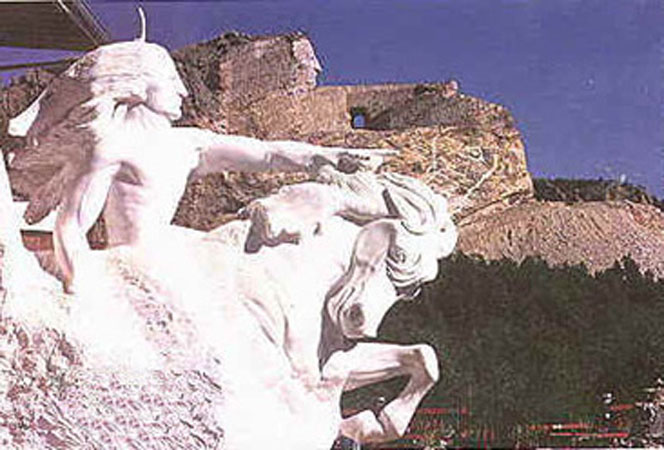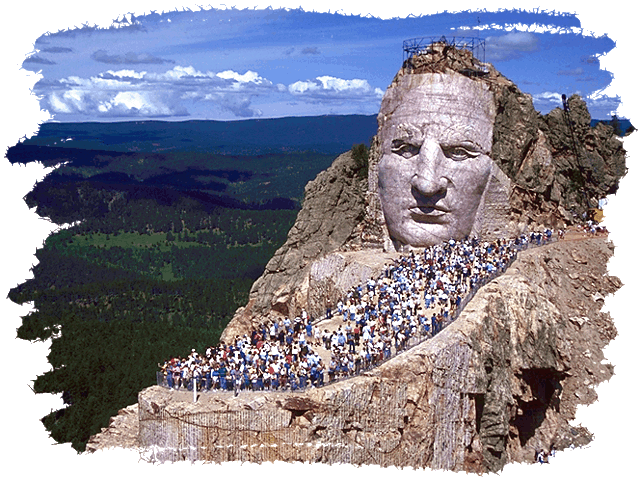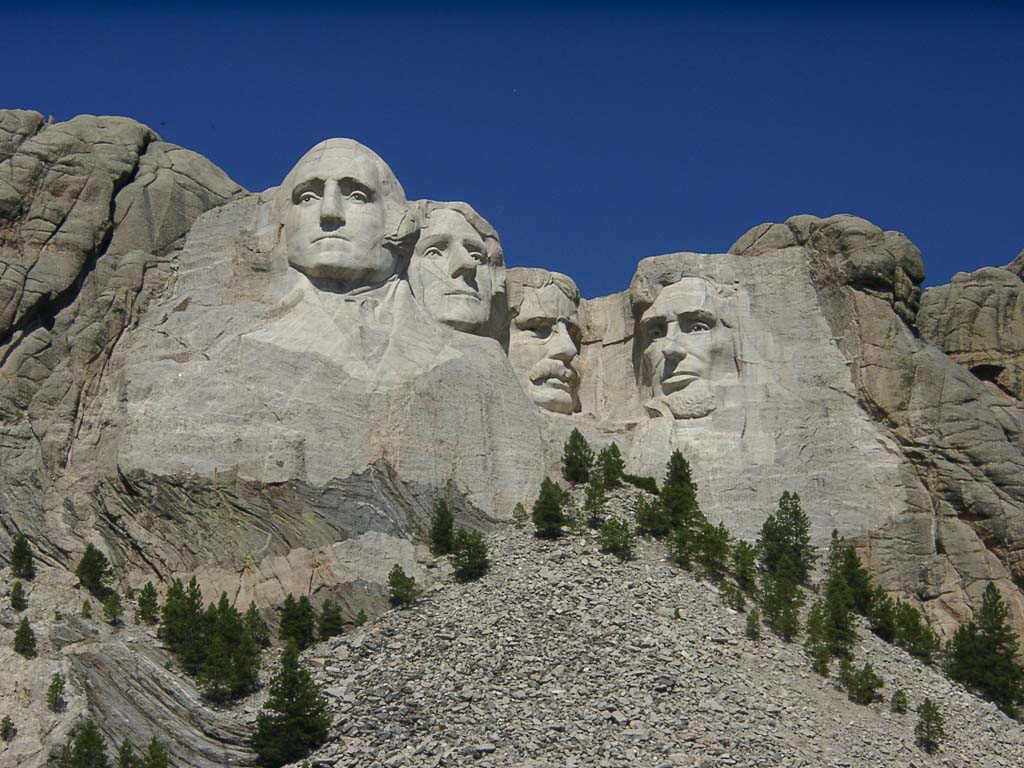
Poetry Presentation, fall 2007
LITR 5731:
Seminar in American Multicultural Literature

Poetry Presentation, fall 2007
Thursday, 4 October: Black Elk Speaks:
Poetry: Peter Blue Cloud, "Crazy Horse Monument"
Poetry reader / discussion leader: Gary Pegoda
Peter Blue Cloud’s “Crazy Horse Monument”
“Crazy Horse Monument” asks whether a stone monument of this Native American hero is what Crazy Horse would have wanted. In terms of class objective number four, the poem asks whether the monument represents “assimilation” or “resistance.”
This poem also would classify the Native American peoples, in terms of objective three, as forced into “involuntary participation” in the American dream.
There is no disagreement here about that, but the next part of that objective, “traditional but disrupted,” while obviously true for Native Americans in the recent historical past and now, to an extent, also represents an issue indirectly explored in this poem.
Questions of
“assimilation versus resistance” and “traditional but disrupted” in fact here go
together, and we will return to them after this reading of the poem.
1.
Does the statue
represent a kind of assimilation, an understanding of the disrupted past and
then a liberation from that past, so that Natives can move on, yet with this
permanent reminder of their heritage to help keep that heritage alive?
2. Does the statue represent not only assimilation but denial of the past, the sacrifice of which past will cut off a people from its cultural heritage?
Such lines as “to capture in stone the essence of a man’s spirit,” indicate the skepticism of the poem. Besides, one remembers Black Elk’s frequent allusions to going back into grass, into the earth, and it would not seem that a stone monument would please him. Reading the poem alone gives a one-sided view of these questions.
So before reading the poem, I would like to give some historical background, which presents a more favorable, less skeptical view of the sculpture project.
“Welcome to the official site of Crazy Horse Memorial and the Crazy Horse Memorial Foundation, a registered 501(c)(3) nonprofit organization. Sculptor Korczak Ziolkowski and Lakota Chief Henry Standing Bear officially started the Memorial in 1948 to honor the culture, tradition and living heritage of North American Indians.”
“This sculpture, begun not quite 60 years ago by sculptor Korczak Ziolkowski (pronounced jewel-CUFF-ski) at the invitation of a Lakota (Sioux) chief, shows the warrior Crazy Horse on horseback, pointing southeast to the lands where many of his people lie buried. The Crazy Horse Memorial is far larger than Mt. Rushmore, yet at the insistence of the sculptor, no government money has been spent on it. No big Indian casino money either, so far.”
Now I will read the poem, and then we will discuss its implications as noted, or as you see fit.
Crazy Horse Memorial
Thunderhead Mountain in Black Hills, South Dakota
8 miles from Mount Rushmore
Begun 1848 by Korczak Ziolkowski (worked on Rushmore Monument, 1927-41)




